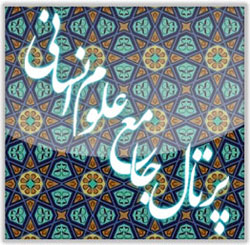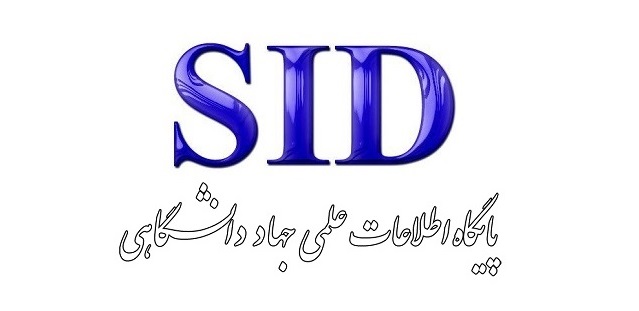Semantic Analysis of Silence in the Works of Iranian Fashion and Clothing Artists Based on Peirce’s Three-Dimensional Semiotics
Keywords:
Silence, Semantics, Peirce's Semiotics, Costume Design, Contemporary Iranian ArtAbstract
In recent years, studies related to fashion and clothing in Iran have gone beyond the functional aspect of covering and have increasingly been considered as a domain for representing cultural and social identity. One of the key concepts that has emerged in contemporary design is “silence”; silence not as absence or void, but as a visual language. In the works of Iranian artists such as Shirin Gild, Araz Fazaili, and Mehrnoush Shah-Hosseini, silence is expressed through the choice of simple forms, neutral color palettes, and the elimination of exaggeration, serving as a tool for conveying dignity, introversion, and a connection to cultural traditions. This article, with a focus on Peirce’s semiotics, seeks to analyze the semantic dimensions of silence in the works of these artists and to demonstrate how fashion design can become a semiotic text reflecting cultural and aesthetic concepts. The research method is qualitative and descriptive–analytical, and data were collected through the study of library sources, visual documents, and the analysis of selected fashion design samples. The theoretical framework is based on Peirce’s triadic semiotics—icon (similarity), index (causal relation and contiguity), and symbol (conventional meaning). The selected works of three contemporary Iranian designers were examined using this semiotic model to reveal how silence transforms into a visual language through form, color, texture, and the omission of decorations. The findings show that silence in contemporary Iranian women’s fashion design constitutes an “active presence” that creates meaning through three pathways: iconic, indexical, and symbolic. The visual resemblance of minimal forms to calmness and introversion (iconic), the deliberate elimination of ostentatious elements as a sign of cultural resistance (indexical), and the cultural encoding of colors and materials within the context of Iranian tradition (symbolic) are the three dimensions that, in interaction, form the language of silence. Ultimately, this article demonstrates that silence is not only an aesthetic strategy but also a tool for dialogue between tradition and modernity, and even for the globalization of Iranian fashion.
Downloads
References
1. Kenny C. The power of silence: Silent communication in daily life: Routledge; 2018.
2. Jaworski A. Silence: Interdisciplinary perspectives: Mouton de Gruyter; 1997.
3. Koda H. Extreme beauty: The body transformed. New York: Metropolitan Museum of Art; 2005.
4. Peirce CS. Collected Papers of Charles Sanders Peirce: Harvard University Press; 1931.
5. de Miranda AP, Domingues I, Souza N. Cultural values of minimalist fashion. Reverse Design: CRC Press; 2018. p. 455-61.
6. Glenn C. Unspoken: A rhetoric of silence. Carbondale: Southern Illinois University Press; 2004.
7. Barthes R. The Language of Fashion. Oxford: Berg; 2006.
8. Atkin A. Peirce's Theory of Signs. The Stanford Encyclopedia of Philosophy. 2013.
9. Martin S, Woodhead L. Making wardrobe space: The sustainable potential of minimalist-inspired fashion challenges. Area. 2022;54(1):68-75.
10. Kawamura Y. Fashion-ology: An introduction to fashion studies. Oxford: Berg; 2005.
11. Mahmoodi-Bakhtiari B. Silence in Iranian culture and communication. Tehran: Samt; 2014.
12. Wittgenstein L. Tractatus logico-philosophicus: Routledge; 1961.
13. Derrida J. Of grammatology: Johns Hopkins University Press; 1976.
14. Cage J. Silence: Lectures and writings: Wesleyan University Press; 1961.
15. Haertel NG. Visual silence in contemporary art: University of Colorado; 2017.
16. Hall ET. The silent language: Anchor Books; 1990.
17. Keshmirshekan H. Contemporary Iranian art: New perspectives: Saqi Books; 2015.
18. Nöth W. Semiotics: The basics: Routledge; 2011.
19. Denzin NK, Lincoln YS. The SAGE handbook of qualitative research: Sage; 2018.
20. Creswell JW. Research design: Qualitative, quantitative, and mixed methods approaches: Sage publications; 2014.
Downloads
Published
Submitted
Revised
Accepted
Issue
Section
License
Copyright (c) 2025 Fateme Shahroodi

This work is licensed under a Creative Commons Attribution-NonCommercial 4.0 International License.









